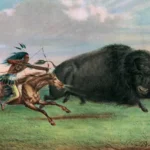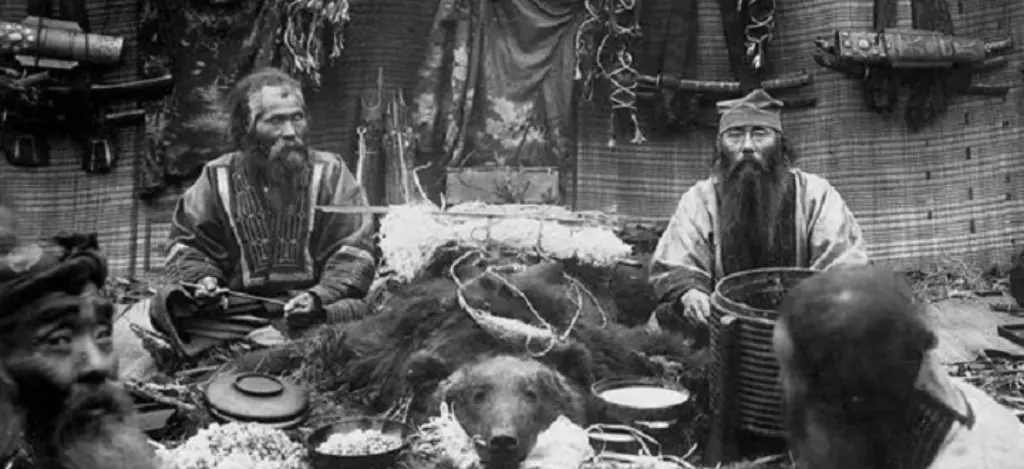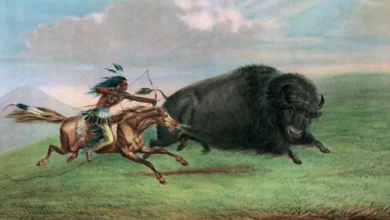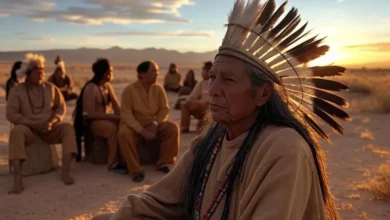Have you ever heard of the Ainu? They are an Indigenous people of Japan, primarily associated with Hokkaido, as well as parts of Russia, including Sakhalin and the Kuril Islands. Their unique culture, history, and language set them apart from the majority Japanese population, making them a fascinating and important part of the region’s heritage. Let’s dive in and explore their story!
Who are the Ainu? Unveiling Their Origins and Identity

Tracing the Roots of the Ainu People
The origins of the Ainu are a topic of much debate and research. Unlike the Japanese, whose ancestry is largely linked to East Asia, the Ainu exhibit certain physical characteristics that have led to comparisons with other populations, including some Europeans. However, genetic studies suggest a more complex history, indicating that the Ainu are a distinct group that likely originated in Northeast Asia.
What is more, the Ainu predate any of the migrations that gave rise to the Japanese people, establishing them as indigenous to the region. Many scholars currently suggest that the Ainu are descended from a population known as the Jomon people, who inhabited Japan and surrounding areas thousands of years ago.
Distinctive Physical and Cultural Traits
The Ainu possess several distinctive physical traits. These include lighter skin compared to other East Asian populations, a higher frequency of wavy hair, and more facial and body hair, especially among men. These characteristics, while sometimes used to differentiate them from other groups, are important to note while also recognizing the diversity within the Ainu community itself.
See also The Use of Bison Hides in Plains Indian Clothing
The Use of Bison Hides in Plains Indian ClothingBeyond physical appearance, the Ainu culture is rich and unique. They traditionally practice animistic beliefs, holding that spirits inhabit all things in nature. Their rituals, art, and social structure reflect this deep connection with the environment. This deep-rooted connection to nature further differentiates them from other cultures in the region.
Ainu Culture: A Tapestry of Traditions and Beliefs

A Deep Connection with Nature: Animism and Rituals
Central to Ainu culture is animism, the belief that spirits reside in all things, from animals and plants to mountains and rivers. This belief system profoundly influences their relationship with the natural world. The Ainu perform various rituals to honor and appease these spirits, ensuring harmony and balance in their lives.
One of the most significant rituals is the iyomante, or bear ceremony. This complex ceremony involves raising a bear cub, treating it with great respect, and then sacrificing it to send its spirit back to the realm of the gods. This is done in the belief that the spirit will then return to the world in the form of a new bear. While the practice of iyomante is now controversial and rarely practiced in its traditional form, it provides valuable insights into Ainu spiritual beliefs and their intricate relationship with the animal world.
Oral Traditions and the Importance of Storytelling
The Ainu possess a rich oral tradition, passing down stories, legends, and histories through generations. These narratives, often sung or chanted, serve as a vital source of cultural knowledge and identity. The yukar, or epic poems, are a particularly important form of Ainu storytelling.
See also The Abaya: Where Tradition and Modernity Weave Elegance
The Abaya: Where Tradition and Modernity Weave EleganceThese long, complex narratives recount the adventures of heroes and gods, providing insights into Ainu mythology and cosmology. The transmission of these oral traditions are pivotal to the preservation of Ainu culture. The yukar, alongside other songs and stories, are essential components of their heritage and offer invaluable insights into their worldview.
Ainu Art and Craftsmanship: Intricate Designs and Skilled Techniques
Ainu art is characterized by its intricate designs and skilled craftsmanship. Woodcarving is a particularly prominent art form, with Ainu artisans creating elaborate patterns on tools, utensils, and ceremonial objects. These patterns often incorporate stylized representations of animals and plants, reflecting the importance of nature in Ainu culture.
Embroidery is another significant art form, with Ainu women creating beautiful textiles adorned with geometric designs. These textiles are used for clothing, ceremonial robes, and other decorative purposes. The motifs used in Ainu art are not merely decorative; they often carry symbolic meaning, reflecting the beliefs and values of the Ainu people. These artistic expressions offer a window into their spiritual beliefs and cultural identity.

A History of Displacement and Assimilation
The Encroachment of Japanese Settlement and Control
The history of the Ainu is marked by a long period of displacement and assimilation. As Japanese settlement expanded into Hokkaido and other areas traditionally inhabited by the Ainu, their land was gradually taken, and their traditional way of life was disrupted. The Japanese government implemented policies aimed at assimilating the Ainu into mainstream Japanese society, often suppressing their language and cultural practices.
This process of assimilation had a devastating impact on the Ainu population, leading to a decline in their numbers and the erosion of their cultural identity. The loss of land, resources, and traditional practices had a lasting impact on the community. These policies and practices had a significant negative influence on the well-being of the Ainu people.
Suppression of Ainu Language and Cultural Practices
A key element of the assimilation policies was the suppression of the Ainu language. Ainu children were often forbidden from speaking their native tongue in schools, and the use of the language in public life was discouraged. This led to a decline in the number of Ainu speakers, and the language faced the threat of extinction.
The suppression of Ainu cultural practices, such as traditional ceremonies and clothing, further contributed to the erosion of their cultural identity. The pressure to conform to Japanese norms and customs led many Ainu to abandon their traditions. The combination of language suppression and cultural restrictions severely impacted the community’s cultural heritage and identity.

The Fight for Recognition and Rights
Despite the challenges they faced, the Ainu never gave up their fight for recognition and rights. Throughout the 20th century, Ainu activists worked tirelessly to raise awareness of their plight and to demand redress for the injustices they had suffered. In 1997, the Japanese government repealed the 1899 Hokkaido Former Natives Protection Act, which had been used to justify discriminatory policies against the Ainu.
This marked an important step towards recognizing the rights of the Ainu people. In 2008, the Japanese government formally recognized the Ainu as an indigenous people of Japan. This recognition was a significant victory for the Ainu community, acknowledging their unique history, culture, and rights. The fight for recognition and rights continues to this day, with the Ainu community working to promote their language, culture, and economic well-being.
The Ainu Today: Challenges and Revitalization Efforts
Challenges Facing the Ainu Community
Despite the progress made in recent years, the Ainu community continues to face numerous challenges. These include poverty, discrimination, and the ongoing threat to their language and cultural heritage. Many Ainu people still struggle with economic hardship, with limited access to education and employment opportunities.
Discrimination remains a problem, with some Ainu people experiencing prejudice and social exclusion. The Ainu language remains critically endangered, with only a small number of fluent speakers. Preserving and revitalizing the language is a key priority for the Ainu community. These ongoing challenges require sustained efforts to ensure the well-being and cultural survival of the Ainu people.
Revitalizing the Ainu Language and Culture
Efforts are underway to revitalize the Ainu language and culture. Language classes are being offered, cultural centers have been established, and traditional arts and crafts are being promoted. The Ainu language is being taught in some schools, and there are efforts to create more resources for language learners. Cultural centers serve as important spaces for preserving and promoting Ainu traditions, hosting workshops, exhibitions, and performances.
The revival of traditional arts and crafts, such as woodcarving and embroidery, is helping to keep these skills alive and to create economic opportunities for Ainu artisans. These revitalization efforts are essential for ensuring the survival of Ainu language and culture for future generations. Furthermore, there are efforts to teach the younger generation about their heritage so they can better understand their roots.
Promoting Ainu Tourism and Cultural Exchange
Tourism is playing an increasingly important role in promoting Ainu culture and providing economic opportunities for the community. Ainu cultural villages and museums offer visitors a chance to learn about their history, traditions, and art.
These cultural attractions provide a platform for Ainu people to share their culture with the world and to generate income for their communities. Cultural exchange programs are also helping to foster understanding and appreciation of Ainu culture. These programs bring together Ainu people with individuals from other cultures, creating opportunities for learning and dialogue.
Sustainable and responsible tourism can be a valuable tool for supporting the Ainu community and preserving their cultural heritage. This provides the Ainu people with a voice.
The Ainu in Russia: A Shared Heritage

The Ainu Presence in Sakhalin and the Kuril Islands
It’s crucial to remember that the Ainu are not solely a Japanese people; their history and territory extend into Russia as well. Historically, the Ainu inhabited Sakhalin Island and the Kuril Islands, now part of Russia. Their presence in these regions dates back centuries, and they have a rich cultural heritage distinct from both the Japanese and Russian cultures. However, their history in Russia has been marked by hardship and displacement.
Challenges Faced by the Ainu Community in Russia
Following World War II, the Ainu population in the Kuril Islands was forcibly relocated to mainland Russia, along with other Japanese residents. This displacement had a devastating impact on their cultural identity and way of life.
Today, the Ainu community in Russia faces numerous challenges, including a lack of recognition and support from the government. They struggle to preserve their language and culture, and they often face discrimination and marginalization. Their history and culture, despite the hardships, persevere. Recognition and support are vital to the survival of their community.
Efforts to Preserve Ainu Culture in Russia
Despite the challenges, there are efforts underway to preserve Ainu culture in Russia. These efforts are often led by Ainu activists and community members, who are working to revive their language, traditions, and art. Cultural centers and organizations are being established to promote Ainu culture and to provide support to the community.
These efforts are helping to raise awareness of the Ainu people in Russia and to ensure that their heritage is not forgotten. Collaboration between Ainu communities in Japan and Russia is also crucial for strengthening their shared cultural identity.
Looking Ahead: A Future for the Ainu People

The story of the Ainu is one of resilience, survival, and cultural pride. Despite facing centuries of displacement and assimilation, they have managed to maintain their unique identity and to fight for their rights. The challenges they face remain significant, but the ongoing efforts to revitalize their language, culture, and economic well-being offer hope for the future.
By learning about the Ainu and supporting their efforts, we can help to ensure that their culture continues to thrive for generations to come. Through continued support and advocacy, the Ainu’s future can be one of cultural strength and self-determination. By learning about and sharing this knowledge, more people can do their part to make this goal a reality.




